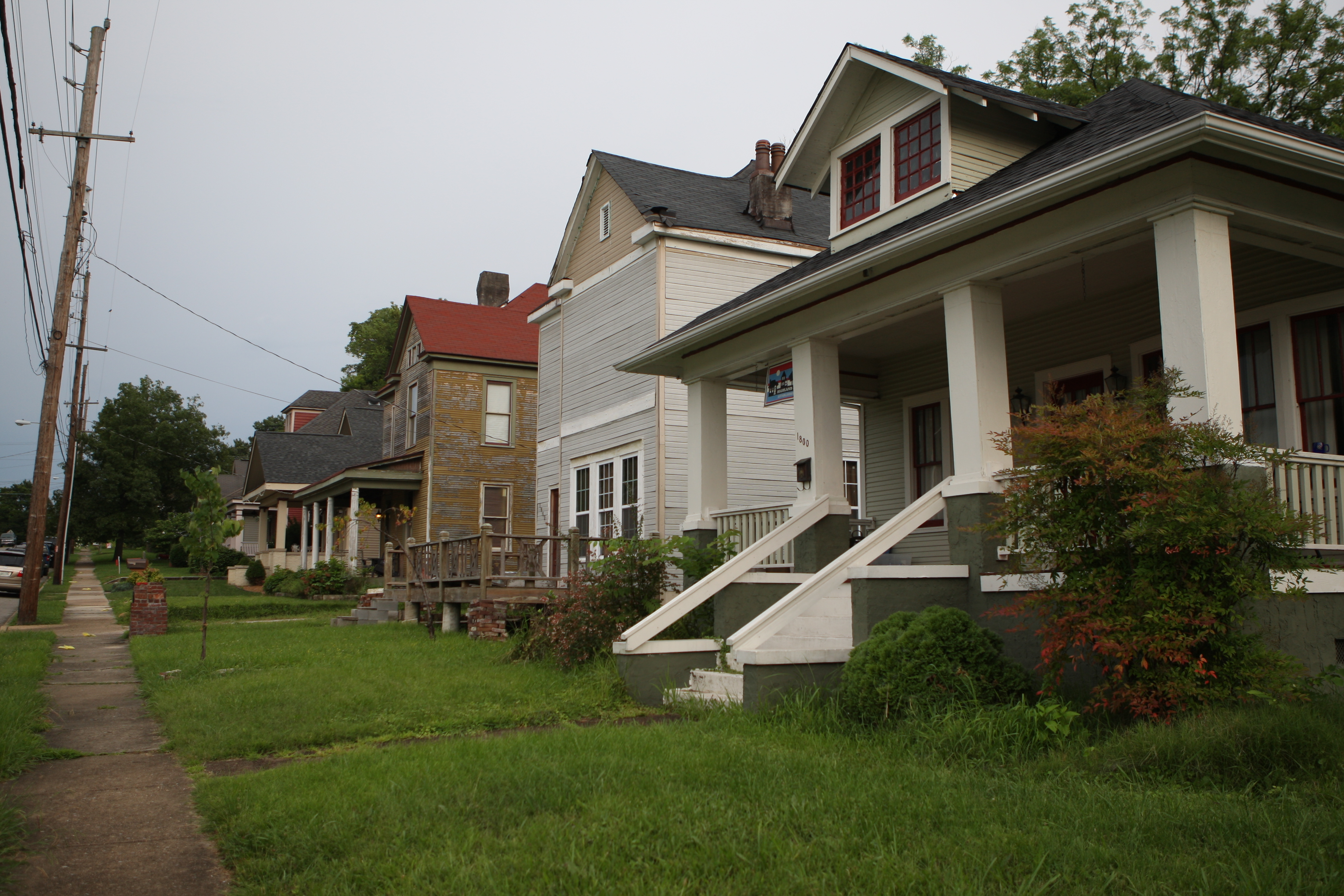URBAN STRATEGIES• Reduce the number of visibly blighted structures and remove structures with a destabilizing influence on neighborhoods• Increase the number of new, moderate-density housing like townhouses or two- and three-unit dwellings in established urban neighborhoods• Ask major urban employers to provide incentives for employees to live in nearby neighborhoods• Form a Housing Task Force to review housing recommendations, track trends and evaluate how effective current housing policies areSource: Chattanooga-Hamilton County Regional Planning Agency, Chattanooga Housing Study 2013
Drivers heading into the Scenic City on Interstate 24 are confronted with a compelling view: the mountains, river, downtown - it's everything that makes Chattanooga Chattanooga, said Abby Garrison, Chattanooga Neighborhood Enterprise chief operating officer.
"It's so gorgeous," she said. "But we tend to forget that there's this whole core of neighborhoods between that view and downtown. And they're key to supporting downtown."
Garrison joined a small group of community leaders Wednesday to discuss how the city can refocus its makeover power - like the effort that turned the Southside from an eyesore into a cultural hotspot - to transform the untouched neighborhoods in East Chattanooga.
"Let's get more folks in the urban neighborhoods, rather than continuing to grow and sprawl outwards," Garrison said.
Wednesday's City Share event featured a Skype conversation with Steve Gondol, the executive director at Live Baltimore, an organization that aims to revitalize Baltimore's urban neighborhoods.
During an hourlong discussion, Gondol outlined how Baltimore managed to stop the city's decades-long population loss and offered advice for Chattanooga.
"Imagery is everything," he told them. "A lot of people have negative ideas about city living."
The perception of East Chattanooga isn't great. The area was one of three regions in Chattanooga - along with Dupont/Murray Hills and Woodmore/Dalewood - that had the highest increases in all crime categories except drug offenses from 2005 to 2009, according to the Ochs Center for Metropolitan Studies.
And crime isn't the only challenge would-be reformers will need to overcome in order to turn the neighborhoods between Missionary Ridge and the Tennessee River into the next Southside or North Shore. A study released this year by the Chattanooga-Hamilton County Regional Planning Agency suggests that the city lacks affordable housing and housing choices - two problems that go hand-in-hand, said Regional Planning Agency Executive Director John Bridger.
"We definitely have an affordable housing challenge," he said. "It is not limited to just folks on the lower end, it's really up to middle-income folks."
One way to address that problem, he said, is to increase the variety of housing in Chattanooga by adding live-work options or by allowing single accessory housing units - like when a family rents out the basement.
"Current zoning doesn't let you do that," he said. "But that could be a quick way to immediately increase the supply of affordable housing."
Another challenge is funding. State Rep. JoAnne Favors, D-Chattanooga, said she'd love to see revitalization in the neighborhoods she represents. But, she added, someone has to foot the bill.
"Just like the North Shore and Southside focus on art, I hope we can have some central focal point for East Chattanooga to help people feel they have a community," she said. "A neighborhood is just houses. To have a community you have to have the businesses, the schools, the grocery stores."
At Live Baltimore, the city pays for between 30 and 40 percent of the non-profit's budget, Gondol said. The organization coordinates efforts among homebuyers, real estate agents, employers and neighborhoods associations.
The city of Chattanooga and Hamilton County should consider funding a similar organization locally, said Nick Wilkinson, CNE's director of development.
"I think all partners who stand to benefit should," he said. "It's a lot more expensive to have ambulances and police and gunshot wounds than it is to have an organization to make the downtown urban environment better."
Contact staff writer Shelly Bradbury at sbradbury@timesfreepress.com or 423-757-6525.

